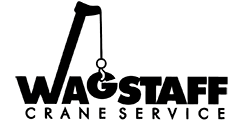Crane safety is a key concept for any site where cranes will be utilizing during a project, and one element that’s vital for anyone operating in these spaces is the use of crane hand signals. Because cranes and their jobsites often involve significant noise that can make verbal communication difficult, the use of visual communication through hand signals is a standard way of ensuring everyone is on the same page.
At Wagstaff Crane & Rigging, we provide comprehensive safety programs and expertise in addition to our extensive fleet of crane rentals for Utah clients – and hand signals will be one of several important concepts we discuss with any clients who will be present on job sites where our cranes are used. While there isn’t time here for a full rundown of every single hand signal that might be used around a crane, and you should be researching such comprehensive resources before you work on any such site, here’s a general rundown of some of the most common and important crane safety hand signals.
Loading or Boom Signals
When the crane is being loaded, there will be a few specific actions taken. Some of these involve load signals, which instruct the crane operator to either raise or lower the load using the crane’s hoist. The two most common hand signals here are hoist load (extending the arm vertically, pointing a finger upward, and making clockwise circles with the hand) and lower load (extending the arm vertically, pointing a finger down, and making clockwise circles with the hand).
In addition to load signals, boom signals are also used. This is when the crane operator needs to be told whether to extend or retract the boom. To do this, they’ll look for two hand signals: Boom up (arm extended, thumb pointed up with a closed fist) and boom down (arm extended, thumb pointed down with a closed fist). These may also sometimes be called raise or lower boom, respectively.
Stop Signals
When it comes to safety, some of the most important hand signals are those which tell the crane to stop what it’s doing. The most common of these is the “stop” signal, where an operator extends their arm out to the side of of them with their palm down, then swings their arm back and forth, touching the chest and moving the arm back out to the side.
There’s also the “emergency stop” signal, which involves extending both arms with palms down and swinging both arms back and forth to signal an immediate halt of all crane operations. Both of these are vital not just for general safety, but also to ensure that everyone on the jobsite is able to communicate effectively and efficiently.
Travel Signals
Cranes will often be moved as part of their project needs, and hand signals will be a part of this process as well. There are a few important travel signals to be aware of:
- General travel: For any mobile crane, the general travel signal involves pointing the fingers upward with the hand extended out in front of the body. The hand will be pushed in and out in the direction you want the crane to be moving. This is one of the single most common signals used around a crane.
- Trolley travel: For tower cranes being moved via trolley travel, the person directing this will point a thumb in the direction travel should go. Their palm will be facing up with their fingers closed in a fist, and they should move the thumb back and forth to signal that travel should begin.
- One-track travel: For crawler cranes that are being transported on a single track, operators should raise a fist to showcase which track is being locked. From here, the other fist should be rotated in front of the body to indicate travel direction.
- Both-track travel: In other crawler crane cases where both tracks are being used for transport, both hands will be rotated with closed fists in front of the signaler’s body. If they rotate toward the body, it means travel forward; if they rotate away from the body, it means travel in reverse.
Who Needs to Know These Signals?
Who needs to know these and other crane operation signals, and why? Here are some of the most notable parties:
- Any crane operator: Naturally, the most important person to know these signals is the crane operator, who will be responsible for following direction and responding with the appropriate action. This person needs to be trained and certified in the use of cranes, as well as their various signals.
- Supervisors: Any person overseeing crane operations should also be familiar with these hand signals so they can ensure that everything is running smoothly and safely. This may include project managers, construction site leads, or other supervisors on a jobsite.
- Workers: Any workers operating directly in the vicinity of a crane should also be aware of these signals, and respond accordingly. This helps to ensure that everyone is familiar with best practices for safety and communication when using cranes.
Overall, crane hand signals are an important element of any jobsite utilizing cranes. All personnel working at or around a crane should be familiar with these signals to ensure the safety of all parties involved.
Cranes may be complex pieces of machinery, but they don’t have to be a source of confusion or danger when everyone is on the same page. By understanding and utilizing crane hand signals correctly, you can ensure that your worksite operations run safely and there are no concerns here.
For more on this, or to learn about any of our crane rentals or the safety programs we maintain for all Utah clients, speak to our team at Wagstaff Crane & Rigging today.

